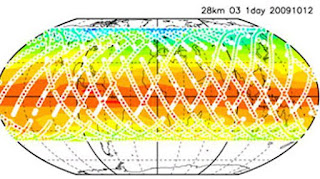The coronal mass ejections, or CMEs, typically produced by solar flares might pose a danger, if not for the Earth's protective atmosphere and magnetosphere. Using International Space Station research and technology, scientists continue to learn more about the atmosphere, adding important new data to the collective understanding of this important defensive veil.
Atmospheric gasses, held in place by gravity, surround our planet and keep us safe from extreme temperatures, ultraviolet radiation, and the vacuum of space. Meanwhile, the magnetic fields generated by and surrounding the Earth the magnetosphere help to shield us from the ever-present, solar wind-increased radiation events resulting from CMEs.
The Japanese Aerospace Exploration Agency, or JAXA, developed a high-precision technology that resides outside the station, mounted on the Japanese Experiment Module–Exposed Facility, or JEM-EF, as part of an investigation to study the chemical makeup of the Earth's middle atmosphere. Known as the Superconducting Submillimeter-Wave Limb-Emission Sounder, or SMILES, this hardware uses a superconducting detector cooled down to 4 Kelvins (-269 degrees Celsius) and is the first of its kind in space.

No comments:
Post a Comment